No products in the cart.
NEWS
Your Ultimate Guide to Growing Delicious Fruits at Home
The idea of plucking fresh, ripe fruit straight from your own garden is incredibly appealing. Many people dream of this but feel intimidated by the prospect of growing fruits successfully. Whether you envision juicy strawberries, crisp apples, or even exotic citrus, cultivating your own edible paradise is more achievable than you might think. This comprehensive guide from Biogarden.Asia is designed to empower gardeners of all levels, from complete novices to seasoned green thumbs, with the knowledge and confidence needed to embark on a fruitful journey. We’ll explore the fundamentals of selecting the right plants, preparing your space, nurturing growth, and overcoming common challenges, helping you transform your gardening aspirations into a bountiful reality.
Getting Started with Fruit Gardening
Embarking on your fruit-growing adventure begins with understanding the basics and making informed choices.
Choosing the Right Fruits for Your Climate
Not all fruits thrive in every location. The first crucial step is to select varieties suited to your local climate zone. Consider factors like chilling hours required for temperate fruits (like apples and peaches), frost tolerance, and heat needs for tropical varieties (such as coconuts or bananas). Researching local extension office recommendations or consulting experienced growers in your area can provide invaluable insights. Starting with easier-to-grow options like strawberries, raspberries, or certain bush fruits can build confidence before tackling more challenging trees.
Site Selection and Soil Preparation
Most fruit-bearing plants require ample sunlight – typically at least 6-8 hours per day – to produce a good harvest. Choose a location in your garden that receives plenty of sun throughout the day. Good drainage is also essential. Waterlogged soil can lead to root rot and other issues. If your soil is heavy clay, consider amending it generously with organic matter like compost. Raised beds are an excellent option for improving drainage and soil quality, especially for berries.
Soil pH is another critical factor. Different fruits have different preferences; for example, blueberries require acidic soil, while many tree fruits prefer a slightly acidic to neutral pH. A simple soil test can provide the information you need to make necessary adjustments using amendments like lime or sulfur.
Popular Fruits and How to Grow Them
Let’s delve into some specific types of fruits you might consider adding to your garden.
Luscious Strawberries
Strawberries are perennial favorites, loved for their sweet taste and relatively quick rewards. They are versatile and can be grown in various settings.
Mulching strawberries is a widely recommended practice. Applying a layer of straw or other organic mulch helps retain soil moisture, suppress weeds, keep berries clean, and provides insulation, which is particularly crucial for overwintering plants in colder climates. Choosing the best mulch for strawberries can significantly impact plant health and yield.
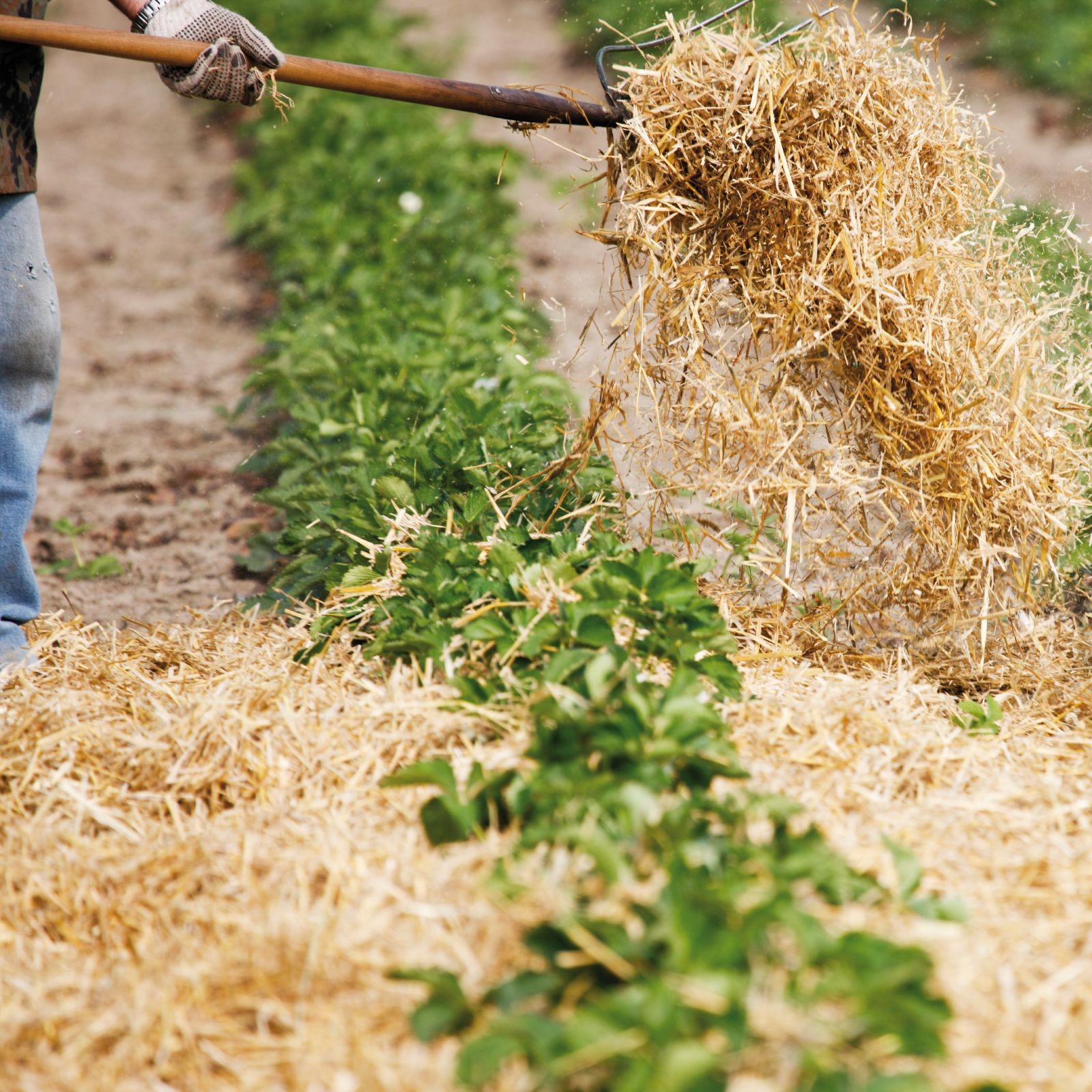 Farmer applies straw mulch around strawberry plants in a garden bed.
Farmer applies straw mulch around strawberry plants in a garden bed.
While most gardeners start with plants or runners, it is possible to grow strawberries from seed found in the fruit itself. This can be a fun experiment, although results may vary compared to starting from established varieties.
Unfortunately, strawberries are susceptible to various pests that can damage foliage and fruit. Learning to identify common strawberry pests and employing protective measures, such as netting or organic sprays, is key to safeguarding your precious crop.
For those with limited space or challenging soil, growing strawberries in raised beds offers excellent drainage and control over the growing medium. Similarly, growing strawberries in containers or a strawberry hanging basket provides a convenient way to enjoy fresh berries even on patios or balconies. For a more advanced approach, hydroponic strawberries allow for faster growth and a cleaner harvest environment.
Tree Fruits
Fruit trees represent a longer-term investment, but the rewards of harvesting your own apples, peaches, limes, or even more exotic varieties like coconuts, bananas, or dates are well worth the wait.
Selecting the right tree for your site is crucial. Some fruit trees are better adapted to tolerate less-than-ideal conditions. For instance, certain types of fruit trees can tolerate or even prefer wet soil conditions, making them suitable for damper spots in the landscape.
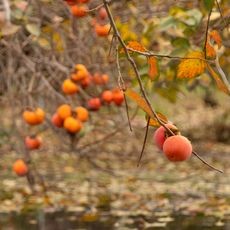 A fruit tree, possibly a persimmon, thrives near a water source, illustrating tolerance for wet soil conditions.
A fruit tree, possibly a persimmon, thrives near a water source, illustrating tolerance for wet soil conditions.
Planting bare-root fruit trees in the fall can give them a head start, allowing roots to establish before spring growth begins, often leading to faster establishment and earlier harvests.
Proper care throughout the year is essential. This includes appropriate watering, fertilization, and crucial seasonal tasks like pruning and preparing trees for winter. Avoiding common fall fruit tree care mistakes can ensure your trees overwinter successfully and are ready for a productive season.
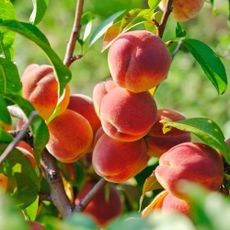 Cluster of ripe peaches hanging on the branch of a peach tree.
Cluster of ripe peaches hanging on the branch of a peach tree.
Growing fruit trees from seed harvested from your favorite fruits (like apples, peaches, or other fruit seeds you should save and plant) is another fascinating project. While the resulting tree may not be identical to the parent fruit due to cross-pollination, it’s a rewarding way to propagate new trees. For specific techniques, learn how to plant apple seeds or how to plant a peach seed.
Exotic fruits like coconuts, bananas, and dates can also be grown, though they often require specific warm climates or indoor cultivation techniques, like indoor banana plant care, to thrive.
Berries Beyond Strawberries
Expanding your berry patch offers a diverse range of flavors and textures. Blackberries and blueberries are popular choices. Pruning blackberries is vital for managing their vigorous growth, improving air circulation, and ensuring a bigger, healthier harvest of juicy berries.
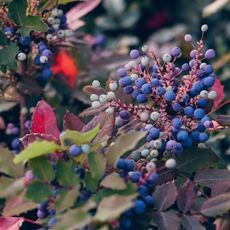 Clusters of ripe blue blueberries growing on a native berry bush.
Clusters of ripe blue blueberries growing on a native berry bush.
Consider incorporating native berry bushes into your landscape. These are often well-adapted to local conditions, require less maintenance, and support local wildlife, offering a sustainable backyard berry option.
Other Garden Favorites
Beyond berries and tree fruits, many other delicious fruits can be grown in a home garden. Watermelons, for example, are a summer staple that, with enough space and heat, can yield incredibly sweet results right from your own patch.
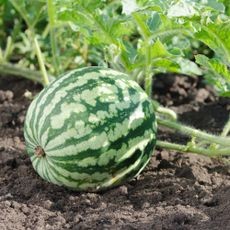 A small, developing green watermelon growing on the vine in a garden.
A small, developing green watermelon growing on the vine in a garden.
Addressing Common Challenges
Even experienced gardeners encounter hurdles. Understanding common issues helps you prepare and react effectively.
Pests and Diseases
Integrated Pest Management (IPM) is the best approach, focusing on prevention, monitoring, and using targeted interventions only when necessary. Healthy plants are less susceptible to pests. Ensuring good air circulation (especially through pruning), proper watering, and rich soil fortified with beneficial microbes (like those found in Biogarden products) can significantly reduce problems. Identify pests early, and use appropriate methods – from hand-picking to organic sprays – tailored to the specific issue.
Soil and Watering Issues
Overwatering and poor drainage are common pitfalls that can lead to root diseases. Ensure your soil drains well, or consider raised beds or containers. Use mulch to help maintain consistent soil moisture and reduce the need for frequent watering. Understanding your plant’s specific water needs based on weather and growth stage is crucial.
Seasonal Care
Each season brings different tasks. Fall care is essential for many fruit plants, preparing them for dormancy and the next season’s production. This includes mulching, pruning, and protecting tender varieties from frost. Winter can be a time for planning and maintenance, while spring signals the start of new growth and pest/disease monitoring.
Advanced Techniques
For those looking to maximize space or explore different methods, techniques like growing in raised beds, containers, hanging baskets, or even hydroponically offer exciting possibilities to cultivate fruits in non-traditional ways.
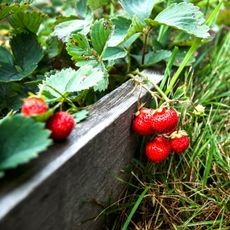 Healthy strawberry plants growing densely in a raised garden bed.
Healthy strawberry plants growing densely in a raised garden bed.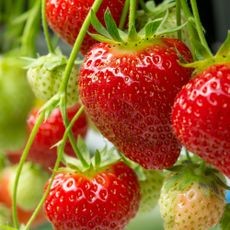 Vertical hydroponic system displaying rows of lush strawberry plants.
Vertical hydroponic system displaying rows of lush strawberry plants.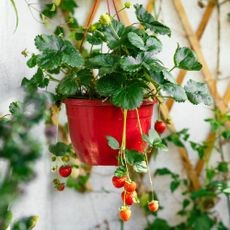 A vibrant strawberry plant with ripening berries cascades from a hanging basket.
A vibrant strawberry plant with ripening berries cascades from a hanging basket.
Conclusion
Growing fruits at home is a deeply rewarding experience, connecting you with nature and providing access to the freshest, most flavorful produce imaginable. It might seem daunting at first, but with a little knowledge, planning, and consistent care, a bountiful harvest is well within reach. From nurturing tiny strawberry seeds to watching a young peach tree laden with fruit, every step of the process brings its own unique joy. Biogarden.Asia is here to support your gardening journey with valuable information and quality products. Don’t let hesitation hold you back; embrace the challenge, start small if you need to, and savor the sweet success of eating fruit grown by your own hands. What fruit will you try growing first?



